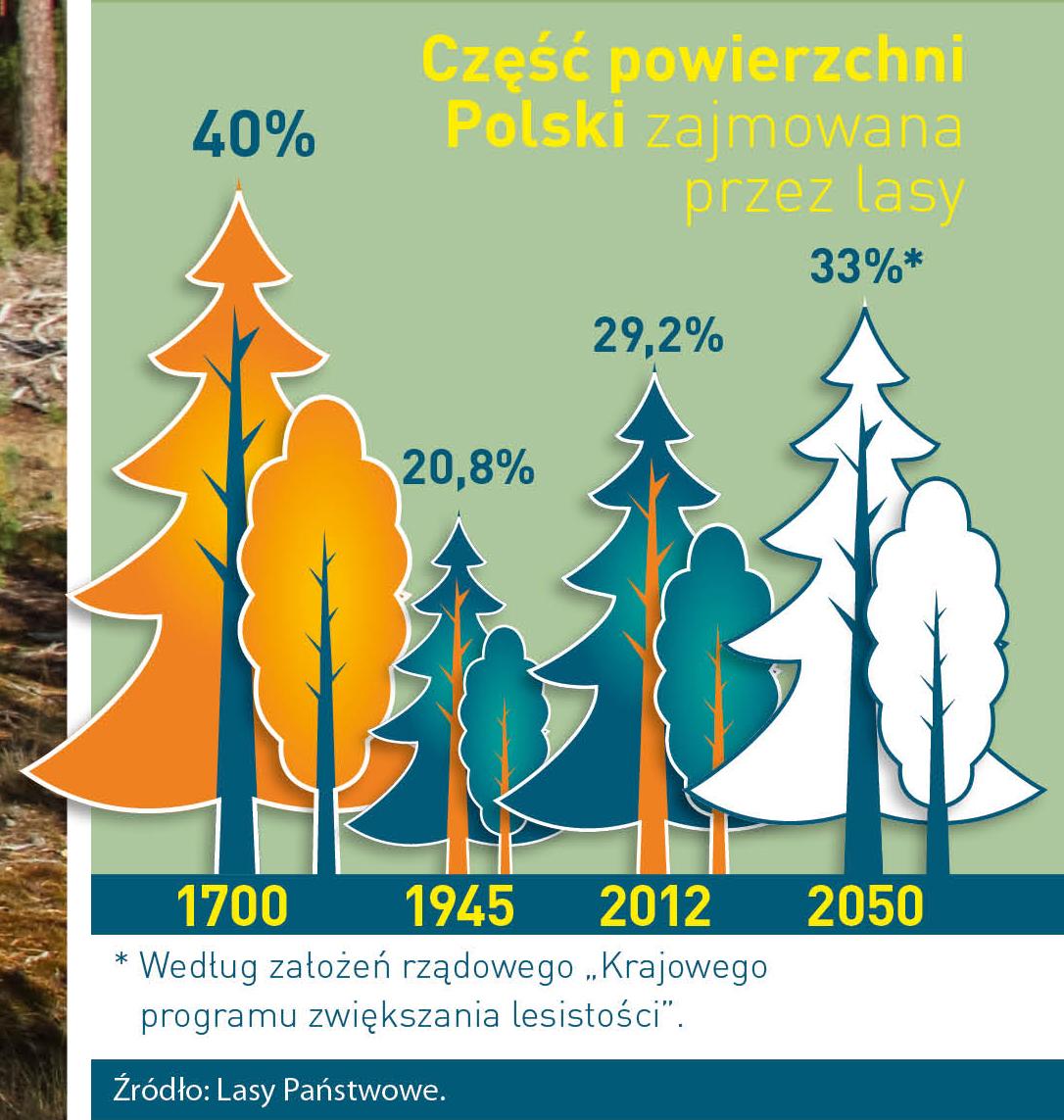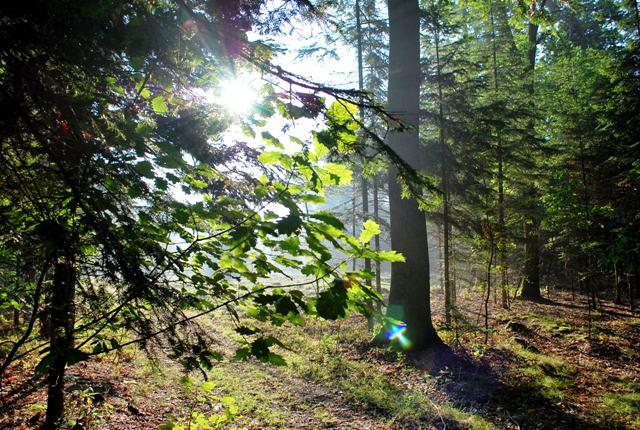 Asset Publisher
Asset Publisher
Polish forests
Poland is in the European lead, while concerning the area of all forests. They cover about 29,2 % of the country territory, and grow within the area of 9,1 million hectares. The overwhelming majority of the forests is state owned, of which almost 7,6 million hectares are managed by the State Forests National Forest Holding..
The number of Polish forest is still growing. The forestation rate of the country has increased from 21 % in 1945 to 29,2 % at the moment. Between 1995 and 2008, the forest area increased by 310 thousand ha. The basis for afforestation works is the "National Programme for Increasing the Forest Cover" (KPZL), assuming an increase of the forestation rate up to 30 % by 2020 and up to 33 % by 2050. Polish forests abound in flora, fauna and fungi. 65 % of the total number of animal species live there.
The forests grow in our country on poor soils, mainly because of the development of the agriculture in previous years. It influences the distribution of the types of the forest sites in Poland. Over 55 % of the forest areas is covered with coniferous forests. In other areas, there are forest sites, mainly the mixed ones. Their small part constitute alder and riparian forests – not more than 3 %.
In the years 1945 – 2011 the area of natural deciduous tree stands within the area of the State Forests National Forest Holding increased from 13 to 28,2 %.
Within the lowlands and uplands the most often occurring tee species is pine. It covers 64,3 % of the forest area of the State Forests National Forest Holding and 57,7 % of private and commune forests. In the mountains the predominant species is European spruce ( in the west) and European spruce with beech (in the east). Domination of pine is the result of carrying on sustainable forest management in the past. Once, the monocultures (crops or cultivations of one species) were the answer to the great demand of industry for wood. Such forests appeared to be quite fragile to climatic factors. They also were often the prey of pests' expansion.
In Polish forests, the share of other tree species, especially deciduous trees have been systematically increasing. The foresters have stepped aside from monocultures – that is why, they try to fit specific species of the forest stand to the natural stand, that would be proper for the given area. Thanks to that, in the years 1945 – 2011, the area of the deciduous tree stands within the lands of the State Forests National Forest Holding increased from 13 to 28,2 %. There occur more and more frequently the following tree species: oaks, ashes, maples, sycamore maples, elms, but also birches, beeches, alders, poplars, hornbeams, aspens, tilias and willows.
Our forests are the most often represented by the forest stands aged 40 to 80 years. The average age of the forest equals 60 years. More and more trees are of big size at the age over 80 years. Since the end of the Second World War, the forests' area has increased up to almost 1,85 million hectares.
Raport o stanie lasów w Polsce 2012
 Asset Publisher
Asset Publisher
 Asset Publisher
Asset Publisher
Lasy nadleśnictwa
Lasy nadleśnictwa
Powierzchnia terytorialnego zasięgu działania Nadleśnictwa obejmuje 82 067 ha, z czego 16 626 ha to powierzchnia gruntów zarządzanych przez Nadleśnictwo, w tym 15 885 ha lasów w 318 kompleksach.
Mozaikowy charakter utworów skalnych i gleb, położenie geograficzne (w zasięgu wszystkich rodzimych gatunków lasotwórczych), specyficzne warunki klimatyczne (surowsze niż otaczających terenów), układ pasm górskich, a także uwarunkowania historyczne, to wszystko wpłynęło na obecny stan szaty roślinnej Puszczy Świętokrzyskiej.
Powierzchniowo dominują tu siedliska Lasu mieszanego wyżynnego oraz lasu wyżynnego, których powierzchnię zajmują głównie sosna i jodła. Kilkuprocentowe udział mają dąb, buk i brzoza. Na siedliskach borów i borów mieszanych (wyżynnych i nizinnych) dominuje sosna z bogatymi podrostami i dolnymi piętrami jodłowymi.
Część lasów Nadleśnictwa Kielce znajduje się w granicach administracyjnych miasta lub w bezpośrednim ich sąsiedztwie, stąd często są nazywane „zielonymi płucami" dla Kielc.
Szata roślinna bogata jest w gatunki chronione, na terenie nadleśnictwa jest ich kilkadziesiąt. Swoje stanowiska ma tu Wawrzynek wilczełyko, Storczyk szerokolistny, Rosiczka okrągłolistna, Lilia złotogłów, Listera jajowata, Konwalia majowa, Kokoryczka okółkowa.
Na terenie Nadleśnictwa występuje 11 gatunków chronionych owadów i mięczaków, wśród nich Mieniak tęcznik, Paź królowej, Czerwończyk nieparek, 5 gatunków gadów: Jaszczurka zwinka, Jaszczurka żyworodna, Padalec zwyczajny, Zaskroniec zwyczajny, Żmija zygzakowata.
Spośród ptaków wyodrębniono 155 gatunków chronionych lęgowych, przelotnych lub zalatujących. Występuje u nas Bocian czarny, Żurawie, Dzięcioł białoszyi, Cietrzew, Zimorodek.
Ssaki reprezentowane są głównie przez ssaki łowne: sarny, jelenie, dziki, ale również liczne gatunki chronione: Jeż wschodni, Bóbr europejski, Ryjówka aksamitna, Nocek duży, Karlik malutki, Wydra, Gronostaj.
Lasy Nadleśnictwa stanowią atrakcyjny komponent krajobrazu województwa świętokrzyskiego, a w celu ochrony cennych elementów przyrody ożywionej i nieożywionej na terenie Nadleśnictwa powołano różne rodzaje form ochrony przyrody: rezerwaty, parki krajobrazowe, obszary chronionego krajobrazu, pomniki przyrody, obszary Natura 2000.


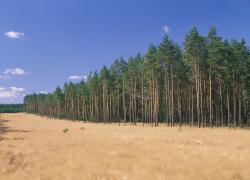 fot. Paweł Fabijański
fot. Paweł Fabijański
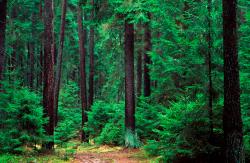 fot. Paweł Fabijański
fot. Paweł Fabijański
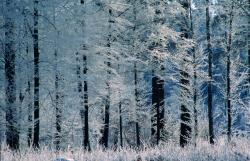 fot. Paweł Fabijański
fot. Paweł Fabijański
